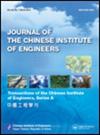基于动态有限元分析的牙种植体优化与创新设计
IF 1.2
4区 工程技术
Q3 ENGINEERING, MULTIDISCIPLINARY
Journal of the Chinese Institute of Engineers
Pub Date : 2023-06-29
DOI:10.1080/02533839.2023.2227878
引用次数: 0
摘要
种植体的使用寿命和强度是影响种植患者健康的关键因素。本文通过修改C-Tech种植体系统模型,对种植体螺纹进行优化设计,通过有限元分析确定螺纹设计对微动的影响。重新设计的C-Tech植入系统的基本测量是通过动态(FEA)建立的。选择了六个种植体参数作为控制因素。采用均匀设计(UD)方法进行了实验模拟。利用动态有限元分析工具ANSYS/LS-DYNA进行每次实验模拟,以确定改良C-Tech种植体系统的最大微运动。采用Kriging插值和遗传算法对微运动进行最小化,得到了最优设计模型。改进设计的微动为12.19µm,而原始设计的微动为38.11µm。改进率为68.02%。最后,接下来的创新设计是在种植体上增加一根次级螺纹。经过仿真,微动减小到4.72µm。与优化设计版本相比,提高了61.28%,与初级种植体相比提高了87.62%。本文章由计算机程序翻译,如有差异,请以英文原文为准。
Optimization and innovative design of dental implants under dynamic finite element analysis
ABSTRACT Dental implants’ usage life and strength are critical factors for implant patients. This paper examines the optimization of dental implant threads by modifying the C-Tech implant system model to ascertain thread design’s impact on micromotion through finite element analysis (FEA). The fundamental measurements of the redesigned C-Tech implant system are established by dynamic (FEA). Six implant parameters are chosen as the control factors to be advanced. Experimental simulations are built using a uniform design (UD) method. The dynamic FEA tool ANSYS/LS-DYNA is utilized for each experimental simulation to identify the maximal micromotion in the modified C-Tech implant system. The optimum design model is acquired by minimizing the micromotion by applying the Kriging interpolation (KGI) and genetic algorithm (GA). The improved design has a micromotion of 12.19 µm, as opposed to the original design’s micromotion of 38.11 µm. The improvement rate is 68.02%. Finally, the following innovative design is to add a secondary thread to the implant body. After conducting simulations, the micromotion is reduced to 4.72 µm. Further, it shows a 61.28% improvement compared with the optimization design version and an 87.62% improvement compared with the primary implants.
求助全文
通过发布文献求助,成功后即可免费获取论文全文。
去求助
来源期刊
CiteScore
2.30
自引率
9.10%
发文量
57
审稿时长
6.8 months
期刊介绍:
Encompassing a wide range of engineering disciplines and industrial applications, JCIE includes the following topics:
1.Chemical engineering
2.Civil engineering
3.Computer engineering
4.Electrical engineering
5.Electronics
6.Mechanical engineering
and fields related to the above.

 求助内容:
求助内容: 应助结果提醒方式:
应助结果提醒方式:


